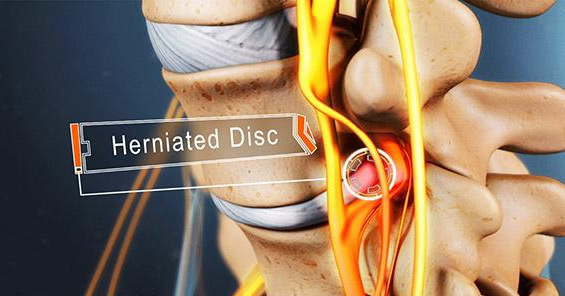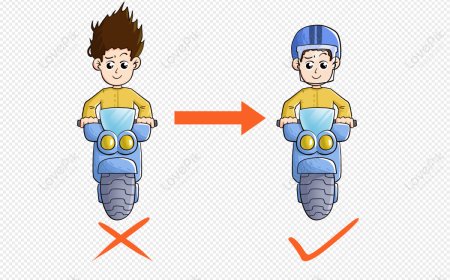What You Need to Know About Exercising with a Herniated Disc
When we’re injured, we have to be careful with exercise to avoid straining the injury and making it worse. That doesn’t mean you have to stop going to the gym altogether! Depending on the injury, your medical team and gym staff can work together to help you exercise safely and ensure your body heals well. The post What You Need to Know About Exercising with a Herniated Disc appeared first on GymGuider.com.

When we’re injured, we have to be careful with exercise to avoid straining the injury and making it worse. That doesn’t mean you have to stop going to the gym altogether! Depending on the injury, your medical team and gym staff can work together to help you exercise safely and ensure your body heals well. A herniated disc is one injury you may sustain that doesn’t end your gym time. Today, we’re going to tackle just what that is, how to treat it, and how to exercise safely when you have one.
What is a Herniated Disc?
If you’ve seen a spine model before, you know that it’s broken down into several smaller pieces— almost like legos. Discs are cushions, small pillows with a tough outer layer surrounding a “nucleus.” These discs serve as small pillows between each vertebra and act like shock absorbers.
When a disc herniates, there is a tear in the outer layer, and the nucleus gets pushed out of place. Your spinal canal isn’t built to contain a nucleus alongside the spinal nerve, so this can hurt— a lot. While herniated discs are more common in the lower spine, any disc in your spinal column can herniate.
Causes
Herniated discs can happen for a number of reasons. You may have strained your back doing any number of activities. Or you sustained an injury, such as in a car wreck. As we age, our spine’s ligaments get weaker, making it easier to herniate a disc. There’s even a genetic factor: some people are more prone to herniated discs along the spine, which pass on through their family.
Symptoms
The size of the herniation and the area of the disc affect your symptoms. If the herniated disc isn’t pressing completely against the spinal nerve, you may have minor to no pain at all. When it is pressing on the nerve, you can have pain, numbness, and weakness. Herniated discs can also aggravate your sciatic nerve, causing conditions like sciatica.
How to Treat Herniated Discs
On the bright side, most herniated discs do not require surgery. With time, they improve on their own. However, you should see a doctor when you’re experiencing back pain to ensure it’s not serious enough to warrant surgery and you won’t injure yourself permanently. Suppose your herniated disc is the result of a car accident or another person’s malicious or negligent actions. In that case, you also need the medical records and paper trail in case you seek out compensation. Many victims of such actions or accidents file for herniated disc case settlements to help pay for their treatment.
Here are a few guidelines to help ensure your herniated disc heals smoothly:
- Limit activities for 2 to 3 days. This doesn’t mean staying in bed— walking is encouraged. Don’t run back to the gym the day after; consider taking ibuprofen if you aren’t allergic. Anti-inflammatories can help.
- See your doctor. Your doctor can evaluate the extent of your injury through physical examination and imaging like X-rays. They may refer you to a spine specialist if the injury is bad enough or if you are in pain for four weeks or more.
- If you are experiencing a significant loss of strength or feeling in your arms, legs, or pelvic area, seek urgent evaluation if you lose control of your bladder or bowel movements. This includes the ER if your primary care physician isn’t available.
Treatments for herniated discs can be divided into surgical and non-surgical. Non-surgical options start with taking anti-inflammatories and may escalate to steroid injections or physical therapy as needed.
If the herniated disc is causing severe complications or if the non-surgical options don’t work, your doctor will consider recommending you for surgery. They will discuss the risks and benefits, as well as the exact type of surgery, so you can make the decision.
Exercising with a Herniated Disc
First and foremost, it’s important to let your gym know that you are working with an injury. This way, they can be prepared if something goes wrong. Preferably, you’ll work with a personal trainer to set up a safe and effective workout plan that scales with your recovery. You also need to follow the advice of your physical therapist. If you work with a trainer, pass information between the two for a more thorough and tailored recovery and to ensure they don’t contradict each other. Likely, your trainer will defer to your physical therapist.
If you can’t work with a trainer, you can research safe exercises for herniated discs. Since each body is different, you’ll want to take what you find to your doctor or physical therapist and ensure they agree you can do them.
Most Importantly, Be Aware
You know your body better than anyone. You are constantly receiving alerts through your nervous system. If your body tells you to stop an exercise, you stop it right then. Be aware of your injury and of safety precautions at your gym, and work with a medical team, if not a professional trainer, to ensure you give your body the best chance at recovery.
The post What You Need to Know About Exercising with a Herniated Disc appeared first on GymGuider.com.
What's Your Reaction?
























































































